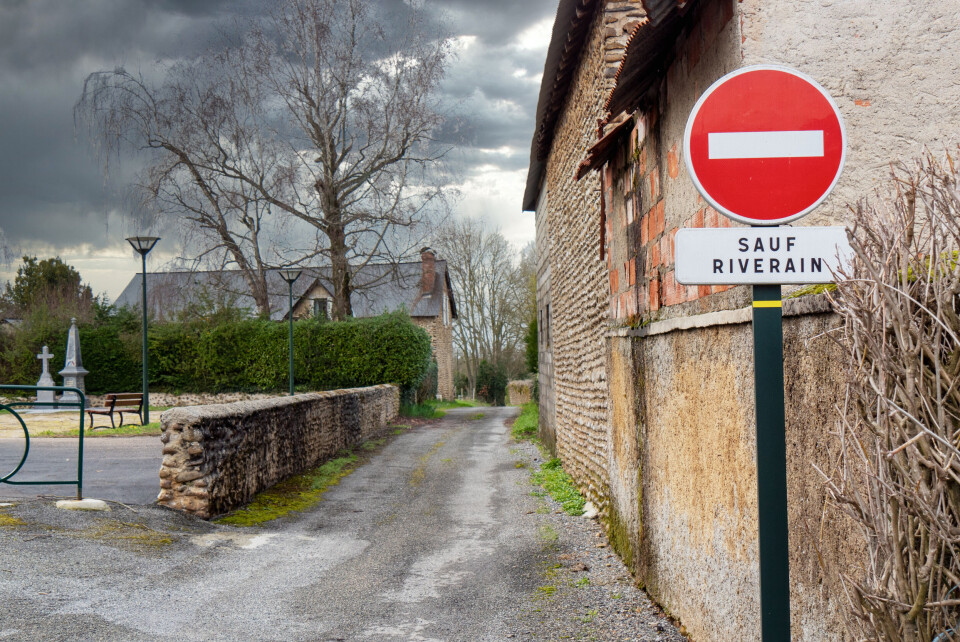-
Is health insurance required to return to visit England from France?
Certain health access remains free at the point of use for all
-
Do self-employed people in France put their personal assets at risk?
Rules for self-employed workers are different than for employees
-
Are there noise rules for motorcycles in France?
‘Sound radars’ may soon come into force following trial
Who decides which French streets can only be used by local residents?
It is fairly common in France to see a no-entry road sign with the condition ‘sauf riverains’, meaning ‘except residents’

Reader question: How is it decided which streets are closed to everyone except for local residents? P.E.
It is fairly common in France to see a ‘no entry’ sign, and below it, another sign with the words sauf riverains (except for local residents of that street).
These signs are more controversial than first meets the eye, since there is nothing in the Code de la route which specifically refers to exceptions for local residents.
The mayor of a commune does indeed have the right to restrict access to certain streets, or sections of streets, via an arrêté municipal (local bylaw).
This decision must be justified and fully explained in the text.
Article L2213-4 of the Code général des collectivités territoriales states that mayors can limit access to certain streets for vehicles which “could compromise public tranquillity, air quality, the protection of animal or plant species, or the protection of nature sites”.
Article L2213-2, meanwhile, allows local authorities to ban “certain categories of users or vehicles” at “certain hours”, due to “necessities of traffic and environmental protection”.
In practice, non-residents are often banned from narrow roads where cars passing in both directions could be dangerous.
Further uncertainty exists around the term riverain and, in particular, whether this encompasses people visiting friends who live on the street, delivery drivers, doctors, and others needing to access the road.
The scope of the term is effectively left to the discretion of the officer issuing the potential fine.
This brought about a particularly delicate situation in the village of Mauléon (Deux-Sèvres) in 2014, when ‘no entry, except for local residents’ signs were placed at each end of a 3.5km stretch of narrow country lane.
After a villager complained to the mayor that this would prevent them receiving their doctor or any friends, the town hall removed one of the signs which, it turned out, had been put up in error.
The lack of legal clarity is not a valid argument should you get caught ignoring one of these signs, however.
You risk a €135 fine and four points off your driving licence, the same as the punishment for driving the wrong way down an ordinary one-way street.
Related articles
Can I park my car in front of my own garage in France?
Why drivers risk a fine in our French city if they leave engine idling
Does France’s disability badge always allow parking in disabled bays?
























